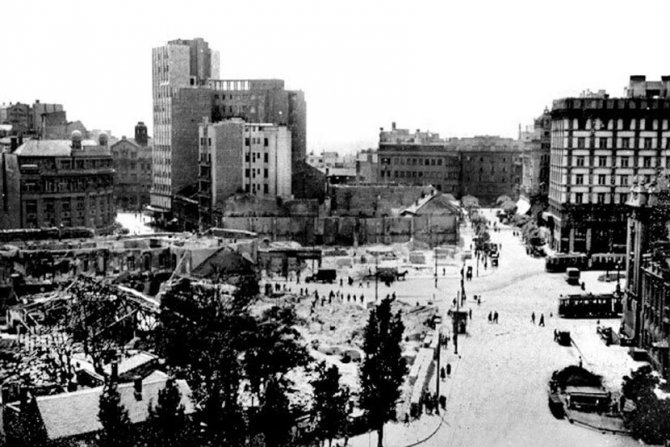Belgrade was still asleep, and hundreds of bombers leveled it to the ground: How did Hitler reach a decision to destroy the capital
German bombers showered the capital of Yugoslavia with bombs 77 years ago, and the cultural genocide was performed on the first day of the war.
Precisely in 6:30 on Sunday morning, on April 6th, 234 bombers and 120 fighter planes shadowed Belgrade. Most of the people of Belgrade were asleep when the bombing started.
The decision to destroy Belgrade was personally made by Adolf Hitler on March 27th, furious over the news about demonstrations against the signing of the "Tripartite Pact", and the overthrow of the Cvetkovic-Macek government.
Namely, under the growing pressure of fascist Germany, Cvetkovic-Macek government signed a protocol on the accession of Yugoslavia to the Tripartite Pact (Germany, Italy, Japan) on March 25, 1941, in Vienna's Belvedere Castle. Proud and freedom loving people expressed their dissatisfaction with the protocol with massive demonstrations in all the cities on March 27th, 1941.
A patriotic group of officers performed a coup on the same day, they overthrew the government of Cvetkovic-Macek, and placed a minor King Petar II Karadjordjevic as a ruler, they formed a new government with the president, general Dusan Simovic.
Surprised with the development of the situation, Hitler reached the decision on March 28th, 1941 to bomb Yugoslavia, with the aim to break it and to destroy it as a state. The decision was known under the code "Project 25".

The execution of the task was entrusted to the 4th Air Fleet under the command of Lieutenant General Alexander Ler, and the operation of the destruction of Belgrade was called the "Terrible Court" (Strafgericht).
The Yugoslav capital was defended by the elite Sixth hunting squadron and the units of the anti airforce division air zone Belgrade.
They inflicted heavy losses but despite the cordial fight of the army in this uneven battle, the fascist side got the victory. Two soldiers died in air combat on April 6th, and six Yugoslav pilots were injured.
Yugoslavia was drawn into the World War II with this attack, although the Yugoslav governments, prior and after the coup wanted to avoid that by all means.
Germany and her allies Italy, Bulgaria, and Hungary, attacked the Kingdom of Yugoslavia without the declaration of war.

The precise number of victims was never discovered, and the most mentioned number of murdered civilians was 2.274. German estimates claimed that the number of victims was between 1.500 and 1.700 while the prime minister of England Winston Churchill said that Germans killed almost 12 thousand souls in his statement for Radio London.
In the first, of the four waves of the bombing, the building number 14 on Kosancic Vvenac was demolished, today's National Library of Serbia.
The building was hit by flammable bombs around 16:00 h. The fire lasted for few days, and according to the residents who lived nearby, the smoke rose from the ruins for months.
In the official German document related to the bombing of Belgrade, presented to the post-war trials, the National Library was marked as one of the first goals.
Video: Premijera predstave "Narodni poslanik" u JDP-u
Telegraf.rs zadržava sva prava nad sadržajem. Za preuzimanje sadržaja pogledajte uputstva na stranici Uslovi korišćenja.


